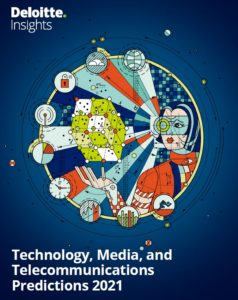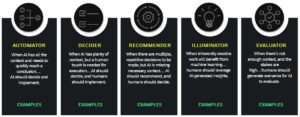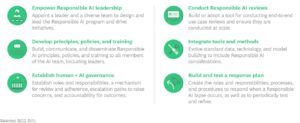
DEL 20201217 Rynek usług w chmurze odporny na skutki kryzysu wywołanego pandemią
W nadchodzącym roku technologia 8K wygeneruje przychody rzędu 5 mld dolarów
Pandemia COVID-19 jest katalizatorem zmian w świecie technologii. Eksperci firmy doradczej Deloitte w raporcie „TMT Predictions 2021” wskazują, że w ciągu kilku miesięcy kryzysu branża technologiczna wypracowała więcej niż przez pięć lat funkcjonowania w normalnych warunkach. Można to zaobserwować również w medycynie, czego przykładem są wideo wizyty. W nadchodzącym roku rynek rozwiązań specjalistycznych, przeznaczonych do takiej formy kontaktu z lekarzem, osiągnie wartość 8 mld dolarów. W 2021 roku będziemy również obserwować intensywny rozwój sieci dostępu radiowego, 5G oraz migracji chmurowej.
To już dwudziesta edycja globalnego raportu Deloitte, omawiającego najważniejsze trendy wpływające na przyszłość sektora technologii, mediów i telekomunikacji na całym świecie. W tym roku eksperci podsumowali wpływ pandemii COVID-19 na poszczególne trendy i przeanalizowali, które z nich rozwijać się będą w 2021 roku.
Tryumf AI i rozwiązań chmurowych. Sztuczna inteligencja (AI) już po raz kolejny znalazła się w raporcie Deloitte. Oznacza to, że możliwości jej zastosowania stale rosną. Obecnie AI osiąga etap dojrzałości i umożliwia kompleksową cyfrową transformację firm technologicznych i telekomunikacyjnych.
W 2021 roku wartość globalnego rynku rozwiązań edge, czyli architektury rozproszonych zasobów IT, wyniesie 12 mld dolarów. Oczekujemy, że podstawą ekspansji w tym obszarze będzie zastosowanie innowacyjnych rozwiązań AI w telekomunikacji – szczególnie w sieciach 5G, jak również przez ofertę dostawców skalowalnych usług obliczeniowych w chmurze, którzy będą wykorzystywać sztuczną inteligencję do stałej optymalizacji swojej infrastruktury. Takie firmy staną się liderami odznaczającymi się wysokim poziomem kapitalizacji i przekazującymi innym dobre praktyki – mówi Sławomir Lubak, Partner, lider branży Telekomunikacji, Mediów i Technologii, Deloitte.
Do 2023 roku 70 proc. przedsiębiorstw może stosować najnowocześniejsze technologie tego typu do przetwarzania danych. Dzięki temu osiągną one nową generację usieciowienia i sprawności operacyjnej. Jednocześnie rozwiązania typu edge pozwolą na jeszcze szybszą, tańszą i bezpieczniejszą działalność tam, gdzie są stosowane. W 2020 roku wartość wydatków na rozwiązania chmurowe nieznacznie się zmniejszyła. Spowodowane jest to głównie redukcją wydatków inwestycyjnych wywołanych przez pandemię i globalną recesję.
Należy jednak zaznaczyć, że rynek usług w chmurze jest i tak stosunkowo odporny na skutki obecnego kryzysu. Pewne sposoby pomiaru wykazują nawet wyższe tempo wzrostu niż w 2019 roku. To wynik zwiększonego zapotrzebowania na usługi cloud w sytuacji, gdy cały świat zaczął pracować zdalnie oraz wzrosło zapotrzebowanie na ogólnie pojęte usługi cyfrowe. W latach 2021-2025 wzrost przychodów utrzyma się na poziomie z 2019 roku i wyniesie 30 proc. Nie wykluczamy jednak wyższej wartości, bo przedsiębiorstwa będą wdrażać technologie chmurowe dla zwiększenia oszczędności oraz jednoczesnego podniesienia swojej zwinności i innowacyjności – mówi Marcin Knieć, Dyrektor w dziale Cloud Engineering Deloitte.
Technologia w służbie sportu. Transformacja cyfrowa ma miejsce również w sporcie. Rozwiązania technologiczne, takie jak: systemy wizyjne, uczenie maszynowe, zaawansowana łączność bezprzewodowa czy czujniki nakładane na ciało zmieniają formułę treningów, współzawodnictwa i kształtowania kariery sportowej. W każdym takim systemie podstawą są dane zawodników. Pojawia się więc kwestia ich racjonalnego i etycznego wykorzystywania. Eksperci Deloitte przewidują, że do końca 2021 roku profesjonalne ligi sportowe opracują i wdrożą nowe zasady zbierania, wykorzystywania i komercjalizacji informacji dotyczących sportowców.
W najbliższym roku na znaczeniu zyskają również transmisje i transakcje sponsorskie w sporcie kobiecym, które już obecnie w najlepszym przypadku warte są miliony dolarów. Rok 2021 nie przyniesie jeszcze miliardowych przychodów, ale stanie się to w nadchodzących latach. Ubiegła dekada pokazała bowiem, że wydarzenia sportowe z udziałem kobiet gromadzą dużą widownię, przyciągają kibiców i generują wartość dla sponsorów – mówi Agnieszka Zielińska, Partner w dziale Doradztwa Finansowego Deloitte.
Kontrowersyjne 5G. Wymagania stawiane przez konsumentów sprawiają, że operatorzy sieci komórkowych muszą zapewniać im najnowsze i najszybsze technologie. Na potrzeby swoich usług posługują się wyspecjalizowaną techniką dostępu radiowego. Wielu operatorów poczyniło znaczne postępy w procesie wirtualizacji sieci szkieletowych i tym samym osiągnęło istotne zyski operacyjne.
Obecnie dużą popularnością cieszą się komórkowe sieci rozproszone, które działają w oparciu o sieć dostępu radiowego (RAN). Na potrzeby obsługi technologii 5G operatorzy muszą zastąpić lub wzmocnić posiadany sprzęt, a standardem będzie wdrażanie otwartej, wirtualnej architektury, zwanej „otwartą RAN”. Z raportu Deloitte wynika, że obecnie na świecie działa 35 takich sieci – wiele z nich póki co w ramach testów. Eksperci oczekują, że do 2023 roku wirtualizacji ulegnie ponad 80 proc. szkieletowych sieci bezprzewodowych. Wyraźny wzrost zainteresowania technologią prawdopodobnie zapoczątkuje istotny trend, które zrewolucjonizuje branżę telekomunikacyjną.
Podobną rewolucję wywołała w 2020 roku technologia 5G. W 2021 roku również będzie to jeden z głównych tematów w branży TMT, który mocno polaryzuje opinie konsumentów. Wielu z nich obawia się negatywnego oddziaływania 5G poprzez promieniowanie. Ankieta konsumencka, przeprowadzona przez Deloitte w maju i czerwcu br. pokazała, że co najmniej jedna piąta dorosłych uważa, że technologia 5G stanowi zagrożenie dla zdrowia.
Najwyższa jakość w domu i w pracy. W ostatnich latach dużą popularność zdobyły telewizory o rozdzielczości 4K. Nachodzący rok może być przełomem w tym obszarze, a wdrożenie standardu 8K pozwoli na jeszcze większą ostrość obrazu.
Przewidujemy, że w 2021 roku technologia 8K wygeneruje przychody rzędu 5 mld dolarów. Podstawowym źródłem będzie sprzedaż telewizorów o tej rozdzielczości. Prognozujemy, że do konsumentów na całym świecie trafi 1,5 mln odbiorników po średniej cenie 3,3 tys. dol. Standard 8K zyska szczególną popularność w segmencie telewizorów o największych rozmiarach, a dodatkowe przychody przyniesie sprzedaż sprzętu – kamer, monitorów czy komputerów, wykorzystywanego do tworzenia i produkcji treści w technologii 8K – mówi Ścibor Łąpieś, Dyrektor, Technology M&A w Deloitte.
Najwyższa jakość sprzętu to również przyszłość na rynku pracy. W 2021 roku dzięki zakupom dokonywanym przez przedsiębiorstwa i instytucje edukacyjne, sprzedaż gamingowych zestawów słuchawkowych wzrośnie dwukrotnie w stosunku do roku 2019, tak jak sprzedaż oprogramowania i usług powiązanych. Na niektórych rynkach tempo wzrostu sprzedaży tego typu zestawów już przyspieszyło, co ma związek z przechodzeniem na wirtualną formę szkoleń w celu uniknięcia ryzyka zarażenia koronawirusem.
Do lekarza na wideo wizytę. Pandemia zmieniła również podejście do wizyt u lekarza. Zarówno pacjenci, jak i medycy nie byli przekonani do wideo konsultacji. Teraz jednak wielu z nich jest gotowych działać w takim trybie przez dłuższy czas.
W nadchodzącym roku udział procentowy wizyt lekarskich online wzrośnie z 1 proc. obecnie do 5 proc. Choć może się wydawać, że to niewiele, warto pamiętać, że w 36 krajach OECD tylko w roku 2019 odbyło się 8,5 mld wizyt lekarskich o ogólnej wartości 500 mld dolarów. Pięć procent tej liczby to ponad 400 mln wizyt wideo o wartości ok. 25 mld dolarów. Pandemia pokazała, że wizyty online mają wiele zalet, w tym oszczędność czasu – mówi Robert Kauf, Senior Manager w zespole Strategy, Analytics, M&A.
Popularyzacja tej i innych form kontaktu zdalnego między lekarzem a pacjentem oznacza zwiększenie zapotrzebowania na technologie, które to umożliwią. Eksperci Deloitte przewidują, że w 2021 roku rynek rozwiązań specjalistycznych, przeznaczonych do tego rodzaju wizyt, osiągnie wartość 8 mld dolarów.
Więcej w: Raport: TMT Predictions 2021


